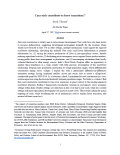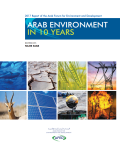
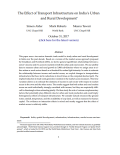
This paper uses a two-sector domestic trade model to study urban and rural development in India over the past decade. Based on a version of the market access approach proposed by Donaldson and Hornbeck (2016), the authors derive general equilibrium relationships between a sector’s income and it’s access to markets in both the urban and rural sectors. Satellite data are used to measure urban and rural growth in 5,900 sub-districts where areas are assigned to either urban or rural sectors based on a threshold for urban light intensity. In order to estimate the relationship between income and market access, the authors exploit changes in transportation infrastructure that have led to reductions in travel times on the computed shortest path. The implied reduction in trade costs generates variation in the market access measures. This time variation allows to estimate the elasticity of income in each sector with respect to market access in the own and the other sector. The results suggest that both urban and rural market access are each individually strongly correlated with income, but they are empirically difficult to disentangle when estimating jointly.
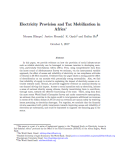
In this paper, the authors provide evidence on how the provision of social infrastructure such as reliable electricity can be leveraged to increase taxation in developing countries, particularly Sub-Saharan Africa (SSA). First, using comprehensive data from the latest round of Afrobarometer Survey the authors estimate, via the instrumental variable approach, the effect of access and reliability of electricity on tax compliance attitudes of citizens in 36 SSA countries. Evidence from the paper shows a strong positive effect of electrification on tax morales with potentially strong externalities. Also, it is found that reliability of supply is crucial in explaining the impact of electricity access on attitudes towards taxes. Second, suggestive evidence on national identity as one channel driving this impact is provided. Access to social amenities such as electricity, induces a sense of national identity among citizens, thereby incentivizing them to contribute, through taxes, towards the effective functioning of the state.
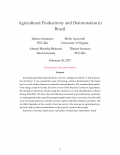
Increasing agricultural productivity can have ambiguous effects on forest protection in theory: it can expand the scope of farming, which is detrimental to the forest, but it can also induce farmers to intensify their production. The authors examine these predictions using county-level data from five waves of the Brazilian Census of Agriculture. The authors identify productivity shocks using the expansion of rural electrification in Brazil during 1960-2000. The authors show that electrification increased crop productivity, and farmers subsequently both expand farming through frontier land conversion, but also shift away from land-intensive activities and into capital- and labor-intensive activities. The net effect depends on the county’s land use prior to the increase in agricultural productivity, but it reduces deforestation in the typical county in the sample.
